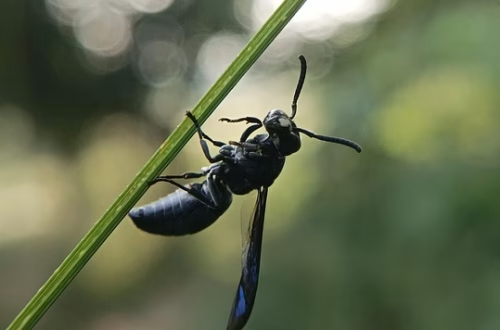Summary:
Pest exclusion services are a proactive approach to pest management, focusing on preventing infestations by sealing entry points and eliminating attractants. These services are essential for homeowners, businesses, and agricultural operations dealing with rodents, insects, and wildlife. State and federal regulations often mandate pest control measures, especially in food production and hospitality industries. By investing in pest exclusion, property owners can avoid costly damage, health risks, and legal liabilities. This article explores key methods, risks, and expert insights to help you make informed decisions about pest prevention.
What This Means for You:
- Cost Savings: Prevent expensive structural repairs and extermination fees by stopping pests before they enter.
- Health Protection: Reduce exposure to allergens, diseases, and contaminants carried by pests.
- Compliance Assurance: Stay aligned with health codes and industry regulations to avoid fines or closures.
- Long-Term Prevention: Unlike reactive treatments, exclusion provides lasting results with minimal chemical use.
Pest Exclusion Services: The Ultimate Guide to Preventing Infestations
”Pest Exclusion Services” Explained:
Pest exclusion services are specialized techniques designed to block pests from entering buildings or properties. Unlike traditional pest control, which reacts to existing infestations, exclusion focuses on prevention by identifying and sealing gaps, cracks, and other entry points. This method combines structural repairs (e.g., installing door sweeps, mesh screens, or weather stripping) with habitat modification (e.g., removing food sources or standing water). It’s a sustainable, eco-friendly strategy that minimizes pesticide use while maximizing long-term protection.
Commonly used for rodents, insects, and birds, pest exclusion is critical in industries like food processing, healthcare, and hospitality, where infestations can lead to regulatory violations. By addressing the root causes of pest attraction, exclusion services offer a proactive solution that complements traditional pest management programs.
Types of Pest Issues:
Pest exclusion targets a wide range of invaders, each requiring tailored strategies. Rodents (mice, rats) exploit tiny gaps in foundations or roofs, while insects (cockroaches, ants) enter through utility lines or vents. Wildlife (raccoons, squirrels) may damage attics or chimneys. In agricultural settings, birds and invasive species threaten crops and storage facilities.
State and federal laws influence exclusion practices. For example, the FDA’s Food Safety Modernization Act (FSMA) mandates pest prevention in food facilities, while the Endangered Species Act restricts certain exclusion methods for protected wildlife. Local regulations may also dictate materials or techniques—such as using rodent-proof construction materials in urban areas or adhering to bird deterrent laws in coastal regions.
Common Pest Control Methods:
Effective pest exclusion combines physical barriers with environmental controls. Sealants (e.g., copper mesh for rodents, silicone caulk for insects) close entry points, while screens and chimney caps block larger pests. Landscaping adjustments, like trimming vegetation away from buildings, eliminate pest highways. Traps and monitoring devices can be used alongside exclusion to address any residual activity.
Successful strategies often involve integrated pest management (IPM), which prioritizes exclusion over chemical treatments. For instance, a restaurant might install air curtains on doorways to deter flies while reducing reliance on sprays. Case studies show exclusion can reduce pest-related complaints by over 70% in multi-unit housing.
Risks and Consequences:
Ignoring pest exclusion can lead to severe consequences. Structural damage from termites or rodents may cost thousands to repair, while cockroach allergens trigger asthma in children. In commercial settings, pest sightings can result in failed health inspections, lawsuits, or reputational harm. The National Pest Management Association reports that rodents alone cause 20% of unexplained house fires by chewing wiring.
Health risks are equally alarming: mosquitoes spread West Nile virus, rodents carry hantavirus, and ticks transmit Lyme disease. Proactive exclusion not only safeguards property but also protects occupants from these preventable threats.
Choosing a Pest Control Service:
Select a provider with proven expertise in exclusion, not just extermination. Look for licensed professionals who conduct thorough inspections, offer customized solutions, and use durable materials. Ask about their experience with your specific pest issue—e.g., a service familiar with bed bugs may not excel at wildlife exclusion. Check for affiliations with industry groups like the National Pest Management Association (NPMA) or GreenPro certification for eco-friendly options.
Transparency is key: a reputable company will explain their methods, warranties, and follow-up protocols. Avoid providers who rely solely on pesticides without addressing entry points. Reviews and referrals can help identify services with a track record of successful long-term prevention.
People Also Ask About:
- Is pest exclusion better than spraying pesticides?
Yes, for long-term prevention. Exclusion addresses the cause (entry points), while pesticides only treat symptoms (existing pests). However, combining both methods may be necessary for severe infestations.
- How much does pest exclusion cost?
Costs vary by property size and pest type, ranging from $200–$2,000. Commercial projects cost more but save money over time by avoiding recurring treatments.
- Can I do pest exclusion myself?
DIY measures like sealing cracks help, but professionals identify hidden vulnerabilities. Complex issues (e.g., attic wildlife) require expert tools and knowledge.
- Does pest exclusion work for all pests?
Mostly, but some (like fleas or stored-product pests) need additional sanitation or treatments. Exclusion is most effective for rodents, birds, and crawling insects.
Expert Opinion:
The pest control industry is shifting toward exclusion as consumers prioritize safety and sustainability. Modern materials, like rodent-resistant foam and UV-stable sealants, now offer longer-lasting protection. However, improper installation can create new problems—for example, sealing bats inside walls violates wildlife laws. Always consult a professional to balance effectiveness with ethical and legal compliance.
Related Key Terms:
- rodent exclusion services for homes
- commercial pest prevention solutions
- eco-friendly pest exclusion methods
- pest-proofing buildings code compliance
- best wildlife exclusion techniques
- pest control laws in California
- cost-effective pest exclusion strategies
Pest Control Disclaimer
This content is for educational purposes only and does not replace professional pest inspection, treatment, or safety advice. Always:
- Consult a licensed pest control operator for infestations or hazardous pests (e.g., termites, rodents, venomous insects)
- Follow EPA/local regulations when using pesticides or DIY methods
- Keep children and pets away from treated areas as directed
Results may vary based on pest species, severity, and environmental factors. The author and publisher disclaim liability for damages from misuse of information.
*Featured image sourced by Pixabay.com





